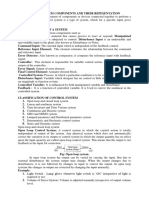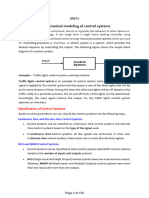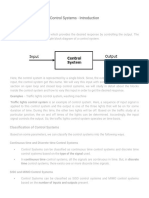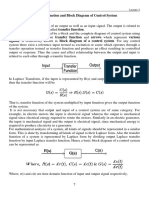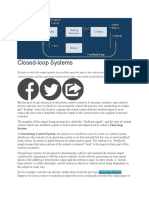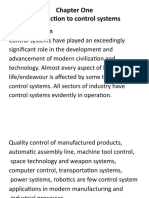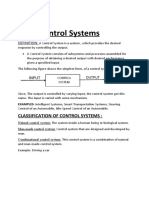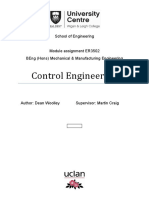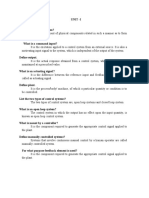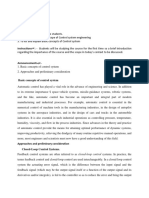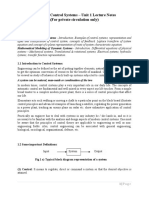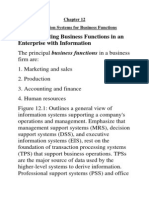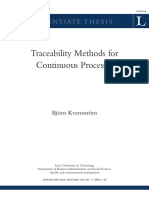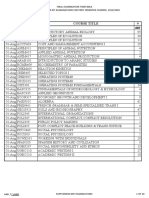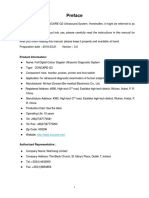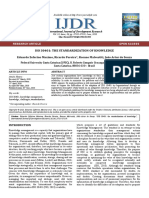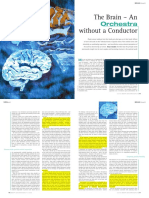0% found this document useful (0 votes)
159 views29 pagesLecture Note On Control Engineering 1
The document provides an overview of control systems, defining them as assemblies of subsystems designed to achieve desired outputs based on specified inputs. It classifies control systems into continuous and discrete time, SISO and MIMO types, and discusses open-loop and closed-loop systems, including their transfer functions and feedback effects. Additionally, it explains block diagrams as a representation of control systems and outlines basic connections between blocks such as series, parallel, and feedback connections.
Uploaded by
ugwuogornnaemeka.205Copyright
© © All Rights Reserved
We take content rights seriously. If you suspect this is your content, claim it here.
Available Formats
Download as DOCX, PDF, TXT or read online on Scribd
0% found this document useful (0 votes)
159 views29 pagesLecture Note On Control Engineering 1
The document provides an overview of control systems, defining them as assemblies of subsystems designed to achieve desired outputs based on specified inputs. It classifies control systems into continuous and discrete time, SISO and MIMO types, and discusses open-loop and closed-loop systems, including their transfer functions and feedback effects. Additionally, it explains block diagrams as a representation of control systems and outlines basic connections between blocks such as series, parallel, and feedback connections.
Uploaded by
ugwuogornnaemeka.205Copyright
© © All Rights Reserved
We take content rights seriously. If you suspect this is your content, claim it here.
Available Formats
Download as DOCX, PDF, TXT or read online on Scribd
/ 29




